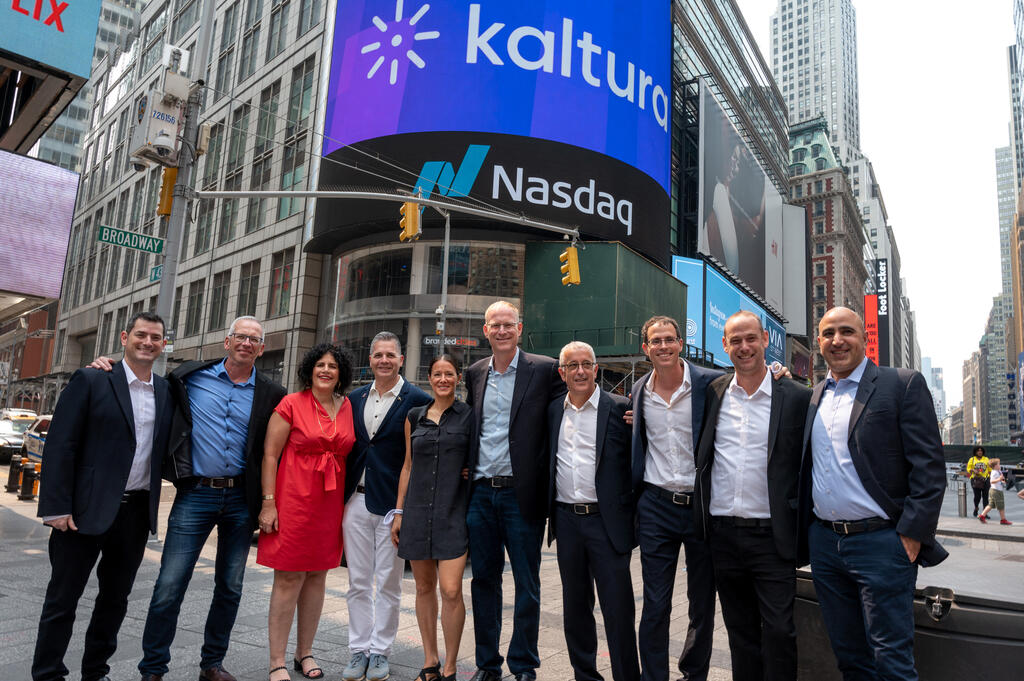
2022’s layoffs were just the promo: The real pain for high-tech is coming in 2023
High-tech companies laid off 7,000 workers in Israel and 100,000 workers in the U.S. last year, but in most companies this was a move designed primarily to please investors. Now comes the real crisis
"Companies do not recover from difficult moves. Managers can decide that they want to be Elon Musk, but it is at their own risk," Debbie Lovich, Managing Director and Senior Partner at the strategic consulting giant Boston Consulting Group (BCG), told Calcalist, "Investors should not always be In first place. What the managers do to the corporate culture during times of recession will affect the company for a long time."
Lovich, who for many years has accompanied the largest and most well-known companies in the processes of building a corporate culture, as well as cutting expenses, was talking about the recent period during which high-tech companies seem to be in a layoffs frenzy. This replaced an opposite panic - of hiring - that characterized the industry from the second half of 2020 to the first half of 2022.
In Israel, high-tech companies have laid off nearly 7,000 workers, while in the U.S. the scope of layoffs is approaching 100,000 workers. However, in most companies, as Lovich implies, these layoffs are mainly intended to please the investors who demand that the management change direction from growth at any cost to profitability at any cost. A large part of the companies wear the badge of layoffs like a medal and talk about it with pride, which only strengthens the assumption that a real layoffs crisis resulting from operational difficulties has not yet come. Most companies lay off about 10% of their workforce and sometimes even less, which further highlights the understanding that these are not moves that will really move the needle in terms of expenses.
"What you see now is just 'let's stop for a moment' and you see it in the very small numbers of layoffs," said Aaron Mankovski, managing partner at Pitango VC. "If a company has a thousand employees and lays off 30 it’s not significant, it's just to convey a message to someone. When it gets to be 25% of the employees it starts to be significant. Whoever made the cuts has already thought beyond the present, considered the structure of expenses and their relationship to income. My assessment is that many companies after the first phase will work on reviewing every penny and on adapting the product to the market. Those who come to the conclusion that it is still not suitable, will have to undergo more extensive layoffs."
Indeed, recently we are starting to see more and more repeated rounds of layoffs in companies such as Kaltura, which tried to avoid a significant round in the first place, but now realized that it did not correctly assess the depth of the crisis. Managers who do not look reality in the eye will find themselves, just as Lovich says, with a damaged organizational culture where the ax of layoffs constantly hovers over the heads of the employees and does not allow them to focus on work.
"No one really lays off 10% of the employees," claims Nir Adler, general partner at venture capital fund SOMV. "In the larger companies, that is the number of employees who leave on their own will, so in practice we are talking about 20% or more of the employees. We must also not forget the abnormal growth in recent years, when some employees were recruited and absorbed remotely via Zoom. Suddenly there are employees who are not really suitable professionally, or those who are not comfortable with teamwork after returning to work in the office, or those who are simply unable to get up in the morning. Until recently, those who received the lowest grades In feedback simply did not receive a raise, but now they will be let go," he explains.
In addition to the low numbers, the identity of those fired indicates that, for the time being, most companies have not really touched their core. The companies that laid off are also the companies that flooded themselves with new employees between 2020 and 2021. This is also the reason why you see quite a few unicorns and companies that are perceived as successful and rich in cash cutting staff. "For more than six months, we have felt the contraction of the industry, layoffs in all the big companies and the startup companies," Shuly Galili, a partner in the UpWest VC firm, told Calcalist. "In 2023 there will be no significant change, but in the first two quarters we will have to assess whether the companies met their goals. If customers start reducing purchases, we will see painful contractions. The cuts will also reach the tech world and we will see many more people being laid off," added Galili.
How will we know if and when the industry is heading for significant layoffs that will also be reflected in the increase in the unemployment rate in the economy, which has not happened until now? The reason for the layoffs is what differentiates between the mass cuts during the dot.com crisis and the current crisis. At the time, organizations bought many communication packages that promised them internet connectivity, without understanding why they needed it or what they would do with all the equipment. With the onset of the recession, technological procurement was frozen and the product suppliers whose prominent representatives in Israel were Amdocs and Comverse began to lay off hundreds of workers. Against this background, the fear also arose this week that if Amdocs fires again - and it also fired a thousand workers at the beginning of the pandemic - then this could be the opening signal for the new wave of 2023.
But the situation today is different. Although a slowdown in purchases from technology companies is expected in 2023, it is clear today that it cannot be completely abandoned. The crisis in technology today can be paralleled to the real estate crisis in many ways - you can buy less, demand decreases, but you can't stop buying completely. Hence, those who know how to develop the products that are really essential to the market and price them correctly will be able to succeed even during a recession.
The recession may benefit two types of high-tech companies: the big and well-known ones, whom purchasing from is seen as safe and also allows you to buy several products in one place and get a discount. At the same time, in the name of saving expenses, there will be a willingness to work specifically with small startups from whom you can get the products or services almost for free in exchange for providing feedback and permitting the use of the client's name. This leaves the mature companies that already have sales, but those that have not yet gone public, facing plenty of question marks. The damage is expected across the board and is also the result of a snowball effect - as companies freeze hiring, they need fewer software licenses and cause a slowdown and even stagnation in the growth of the companies that sell to them.
In 2022, most companies met their growth targets or slightly revised them in the process. The year 2023 is the first real year in the recession, with interest rates that are still rising and especially in a market where most companies have already reported a significant reduction in the purchases they make. The result is that many startup companies have to update their growth forecast significantly downwards and this after, according to evidence from local tech industry officials, most private companies did not meet their growth forecasts for 2022. The picture regarding the public companies will become clearer in the coming weeks when the financial reporting season begins.
A company whose revenues will decrease will be forced to lay off employees as it closes product lines and sometimes entire departments. Investors today encourage the companies to focus their efforts on the products that sell the best and not to be dragged into side adventures that might yield something in the future. Therefore, activities that will not see an immediate return on investment will simply be stopped and then the technological talents may also begin to be released into the market.
Yair Snir, managing director at Dell Technologies Capital, the investment arm of the semiconductors manufacturer, believes that employees will mainly suffer as a result of their companies not meeting growth goals. "We will see damage to the performance of the big companies and those who have to sell to them. The result of this damage will be budget adjustments that will lead to layoffs in a considerable number of companies." But Snir also believes that this is a period that can lead to a better future for the industry. "If the entrepreneurs and investors will lead to a new normal situation where there is no craziness and new companies will be established, salaries will balance where they should balance and real estate expenses will decrease. This will be a correction that is good for the industry and will allow a large part of the industry to make amends."
According to Galili, "Very young companies that are targeting the American market will have to reassess their route and change course to other goals they might reach. We will also see cutbacks in talent, which is more difficult. Many companies, especially those that were founded in the last year or two, learned from the beginning to work with talents from all over the world. They can be more efficient in hiring employees."
Galili warns against the phenomenon of companies that do not know how to run their course correctly. "I believe that we will see companies that close during this period and there are many people who can help them not reach a state of collapse if the company is not sold or does not merge with another company. We need to plan for the closure. There is still money in the market and there are funds that invest, but it is much more difficult to raise the next round. Many companies will reach a situation where they are not able to rely on the next round."
One of the possible implications will be an increase in the purchase of teams known as aquihires. It is estimated that we will see many such purchases in the coming year, when instead of closing the company and firing the employees, it will be possible to preemptively soften the blow and move entire groups of employees to a new home, which is in a better financial condition. For the buyer in these situations, the transaction will save searching for employees and building teams that know how to work well together.















